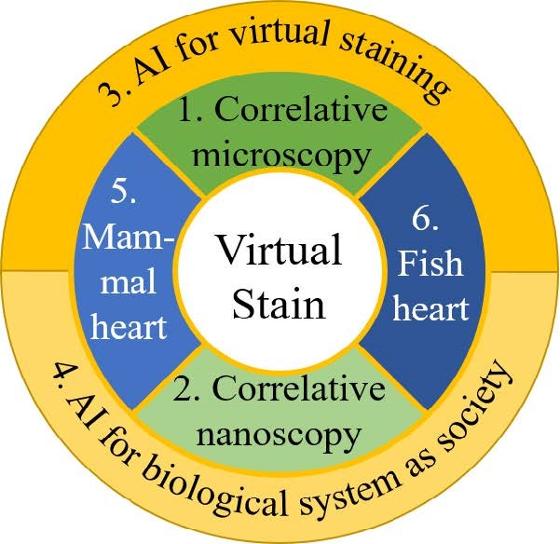
Research
The project consists of eight work packages, each focusing on important aspects for reaching the scientific objectives of VirtualStain.
There are six scientific work packages:
WP1: 3D label-free microscopy and correlative histopathology of tissues
This work package, led by Frank Melandsø, will focus on improving the resolution, imaging time and penetration depth of photoacoustic and scanning acoustic microscopy.

WP2: 3D label-free nanoscopy and correlative microscopy of cells
This work package, led by Krishna Agarwal, will be pushing the resolution
limits of label-free nanoscopy, and produce nanoscopy datasets for the development and training of the AI tools.
WP3: AI solutions for virtual staining of 3D label-free images and identifying cells and organelles
This work package, led by Alexander Horsch, will develop new semi-supervised AI strategies for interpreting label-free images through virtual staining and identification of tissue and cell structures.
WP4: Artificial intelligence solutions for ‘biological systems as society’
This work package, led by Dilip Prasad, will focus on the development of next-generation agile, scalable and self-adaptive AI models for modelling complex biological systems, including cell-cell and environmental interactions.
WP5: Cardiac mitochondrial quality control (MOQ) in mammals
This work package, led by Truls Myrmel together with Åsa Birna Birgisdottir, will provide a specific case for AI modelling of complex biological systems. Using established methods to study heart cells and their mitochondria will provide both samples for imaging and data for developing the complex biological models. The use of the these complex biological models can make possible the development of better diagnostic tools and treatments.
WP6: Cardiovascular disease progression in salmon
This work package, led by Roy Ambli Dalmo together with Jaya Kumari Swain, represents another case study for VirtualStain, focusing on the imaging and modelling of pathogen-host interaction during progression of heart disease in salmon.